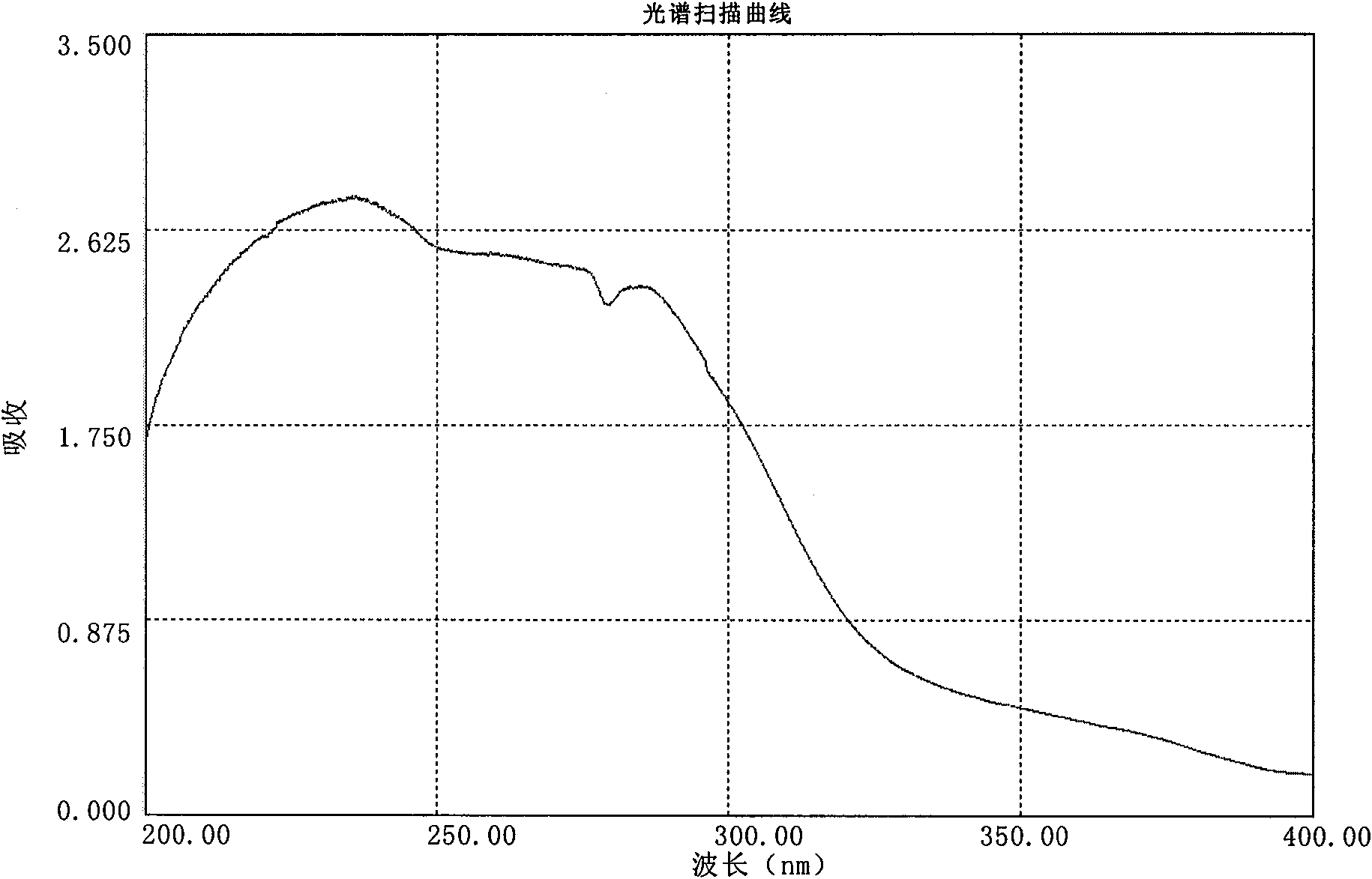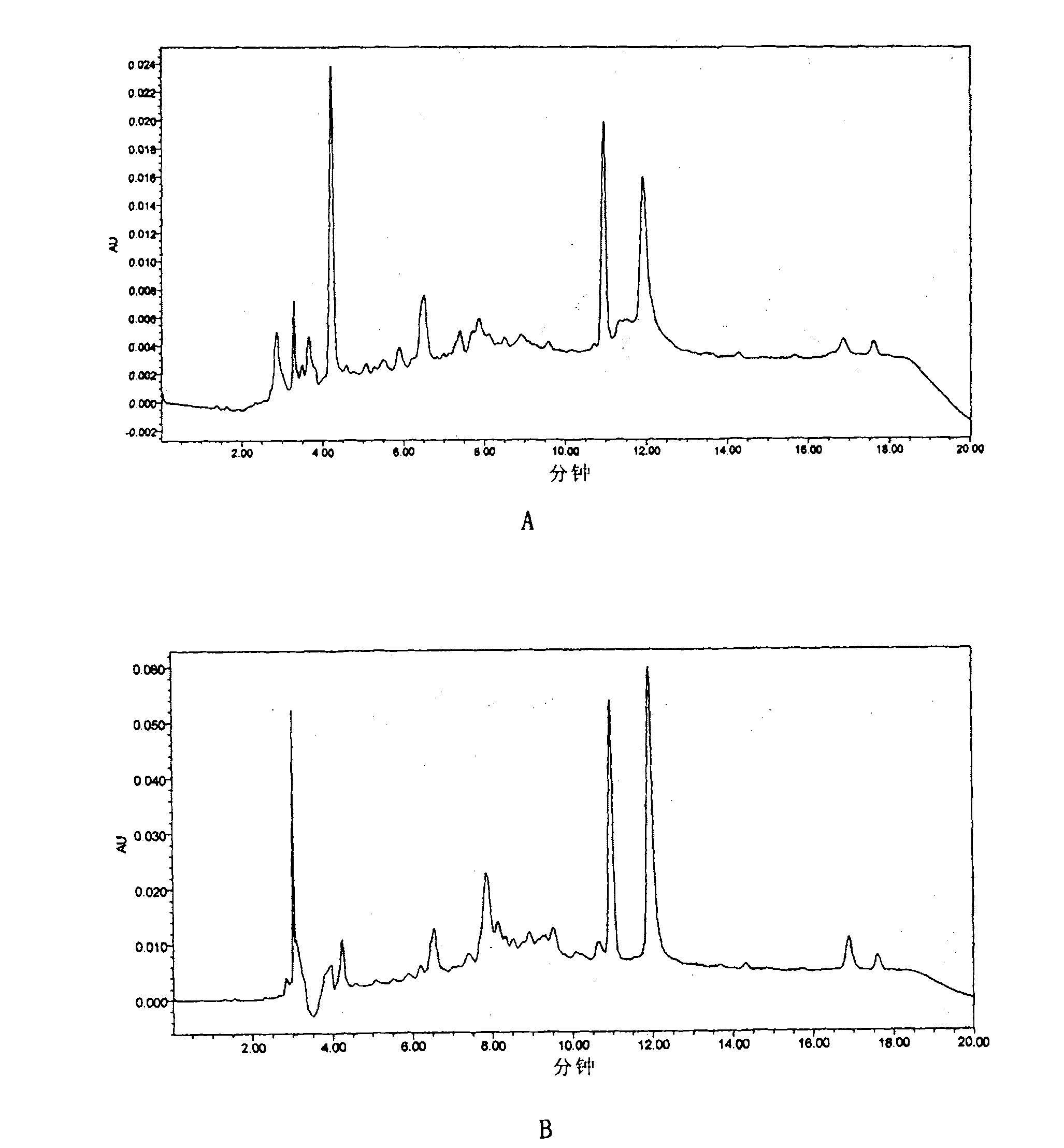Extract from fruit shell of camellia oleifera abel and preparation method and application thereof
An extract, Camellia oleifera technology, applied in the field of plant extracts, can solve the problems of limited application range, certain toxicity, unstable chemical structure, etc.
- Summary
- Abstract
- Description
- Claims
- Application Information
AI Technical Summary
Problems solved by technology
Method used
Image
Examples
preparation example Construction
[0050] The preparation method of Camellia oleifera extract
[0051] Camellia oleifera extract provided by the invention can be prepared by the following method:
[0052] (1) Mix Camellia oleifera and alcohol-water solvent, and extract Camellia oleifera extract by one or more methods selected from the following: leaching, heat reflux extraction, countercurrent extraction, ultrasonic extraction, or microwave radiation extraction.
[0053] The Camellia oleifera raw material used in the present invention can be pretreated or not. The preferred raw material is 5-50 mesh chips with water content below 10w / w%.
[0054] The Camellia oleifera extract provided by the invention is obtained through alcohol-water solvent extraction. The alcohol-water solution is an alcohol solution with a volume percentage of 0-100%. Alcohols commonly used in this field can be used, such as ethanol and methanol, preferably ethanol. The extraction method is thermal reflux extraction, countercurrent extra...
Embodiment 1
[0099] Ultrasonic-assisted Extraction of Camellia oleifera Extract I
[0100] (1) Take Camellia oleifera, crush it and pass through a 50-mesh sieve, put it in a container, add 10 times the weight of water, and extract it by ultrasonic wave at 60°C for 20 minutes;
[0101] (2) Centrifuge the above-mentioned extract at 4000 rpm for 10 minutes, take the supernatant, and dilute it for use;
[0102] (3) Take the extract, dry it at 60°C, and calculate the yield of Camellia oleifera Extract I to be 11.9% (w / w).
[0103] Adopting aluminum nitrate-sodium nitrite colorimetric method to measure the total flavonoid content in every 100 grams of dry tea cattail is 3.05 grams, and the total flavonoid content in Camellia camellia extract I is 25.6% (calculated as rutin).
[0104] The yield of total phenols determined by Folin's phenol colorimetry was 2.31%, and the total phenol content in Camellia oleifera Extract I was 19.4% (calculated as gallic acid).
Embodiment 2
[0106] Ultrasonic-assisted Extraction of Camellia oleifera Extract II with 50% Ethanol
[0107] (1) Take Camellia oleifera, crush it and pass through a 50-mesh sieve, place it in a container, add 10 times the weight of 50% ethanol solution, and extract it by ultrasonic wave at 30°C for 30 minutes;
[0108] (2) The above extract was centrifuged at 4000 rpm for 10 minutes, the supernatant was taken, concentrated, and spray-dried to obtain Camellia oleifera Extract II.
[0109] The content of flavonoids in Camellia oleifera extract was determined by aluminum nitrate-sodium nitrite colorimetric method to be 28.5% (calculated as rutin).
[0110] The total phenol content in the extract of Camellia oleifera was determined to be 21.4% (calculated as gallic acid) by the Folin phenol colorimetric method.
PUM
 Login to View More
Login to View More Abstract
Description
Claims
Application Information
 Login to View More
Login to View More - R&D
- Intellectual Property
- Life Sciences
- Materials
- Tech Scout
- Unparalleled Data Quality
- Higher Quality Content
- 60% Fewer Hallucinations
Browse by: Latest US Patents, China's latest patents, Technical Efficacy Thesaurus, Application Domain, Technology Topic, Popular Technical Reports.
© 2025 PatSnap. All rights reserved.Legal|Privacy policy|Modern Slavery Act Transparency Statement|Sitemap|About US| Contact US: help@patsnap.com



